Revealing the truth of the 100th Army of the Japanese Bacteriological War against China: Why is it little known?
Xinhua News Agency, Changchun, September 17th Title: Suffering Witness: Revealing the 100th Army of Japanese Bacteriological Warfare invading China.
Xinhua News Agency reporters Liu Shuo and Zhang Boyu
The 100th Army of the Japanese invaders (referred to as "the 100th Army" for short) is a mysterious and unfamiliar serial number. During Japan’s invasion of China, this mysterious army under the guise of "epidemic prevention" studied all kinds of deadly bacteria and made bacterial weapons. Countless people were killed, countless animals and plants were reduced to experiments, and the whole northeast and even the whole country were shrouded in the great threat of bacterial warfare.
Nowadays, the terrible germ warfare has become history, and the historical truth that the Japanese invaders tried to cover up has been uncovered. We should accuse the invaders of their terrible crimes in those years, and remember our compatriots who struggled tenaciously under such threats in those years. These compatriots witnessed the sufferings brought by the 100th Army and fought unyieldingly for the victory of the Anti-Japanese War.
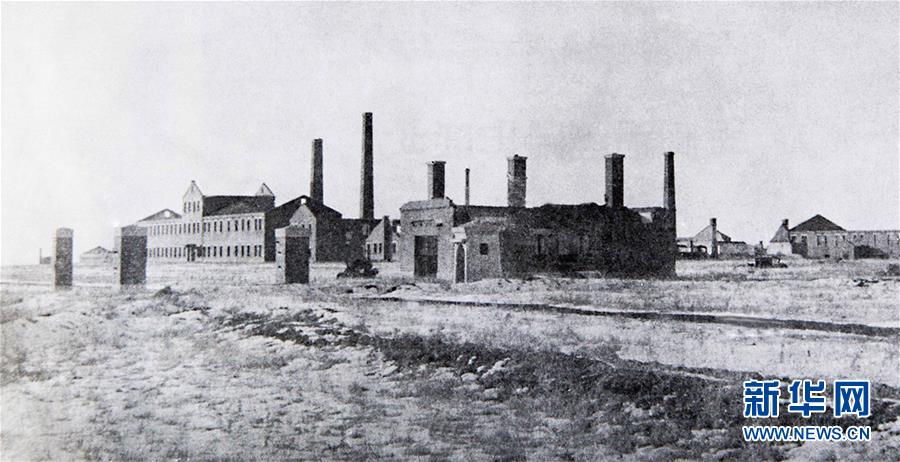
The "devil" of germ warfare has quietly arrived.
In August 1945, in a mysterious courtyard near Mengjiatun in the western suburbs of Changchun, many Japanese soldiers were busy burning photos, experimental records and some related materials. There is a terrible fact that has been covered up for many years in the information they tried to burn completely.
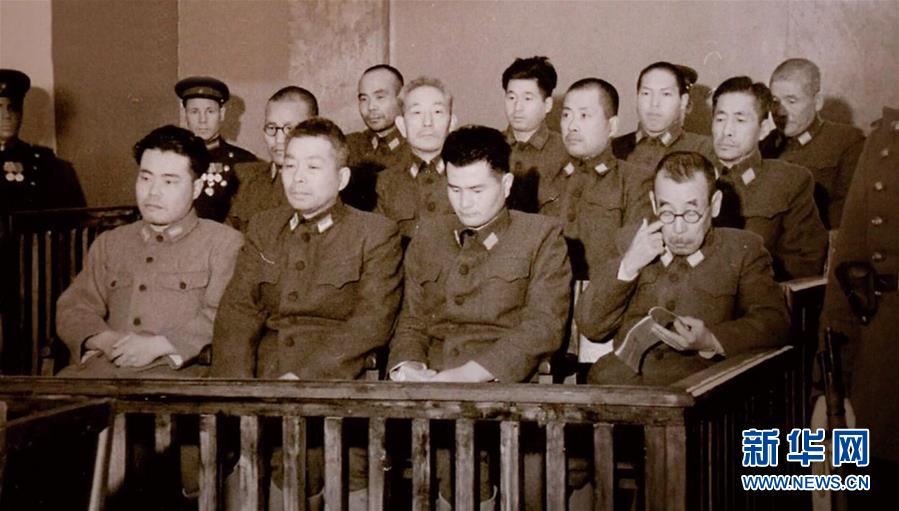
In December 1949, a germ warfare trial presided over by the former Soviet Union revealed the true meaning of the long-hidden 100th Army. According to war criminals Gao Qiao Longdu, Hirasakura Quanzuo, Sanyou and a man, the 100th Army of the Japanese invaders worked to prepare for germ warfare. This is three friends, one man (front row, left one) and Hirasakura Quanzuo (front row, right two) waiting in the trial court (data photo). Xinhua news agency
In December 1949, a germ warfare trial presided over by the former Soviet Union revealed the true meaning of the long-hidden 100th Army. According to war criminals Gao Qiao Longdu, Hirasakura Quanzuo, Sanyou and a man, the 100th Army of the Japanese invaders worked to prepare for germ warfare. The secret was revealed.
According to Liu Long, director of the research center of the Puppet Manchuria Palace Museum, cavalry was once an important arm in the Japanese invasion of China, and a large number of veterinarians were needed to treat and prevent diseases, so a veterinary force was set up to meet such needs. However, with the expansion of Japan’s war of aggression, Japanese invaders need more lethal weapons, which gave birth to their idea of studying bacterial weapons and launching bacteriological warfare. As a result, the infamous 731 unit was born, and at the same time, the "devil" of the 100 th unit quietly began to create evil.

Zhao Shijian, a researcher at the Puppet Manchurian Palace Museum, found that the predecessor of the 100th Army was the temporary sick horse shelter set up by the Kwantung Army in November 1931. In February 1933, the Kwantung Army Command ordered the temporary sick horse shelter to be reorganized into the temporary sick horse factory of the Kwantung Army, and the site was moved from Fengtian (now Shenyang) to Xinjing (now Changchun). On April 23, 1936, the Chief of Staff of the Kwantung Army, Banyuanzheng Shiro, submitted the "Opinions on Enriching the Soldiers in Manchuria" to the Army Province, proposing "adaptation ‘ Kwantung Army Temporary Sick Horse Factory ’ , making it a research institution for treating injured horses, epidemic prevention and germ warfare countermeasures, newly established ‘ Guandong Army Veterinary Epidemic Prevention Factory ’ (At the time of listing, the official name was ‘ Kwantung Army Horse Epidemic Prevention Factory ’ )”。
On August 1, 1936, the Kwantung Army Horse Epidemic Prevention Factory was established, marking the formal establishment of the 100th Japanese Army. At the end of 1940, according to the order of the Kwantung Army, this unit adopted a secret serial number, namely the 100th Manchurian Army.
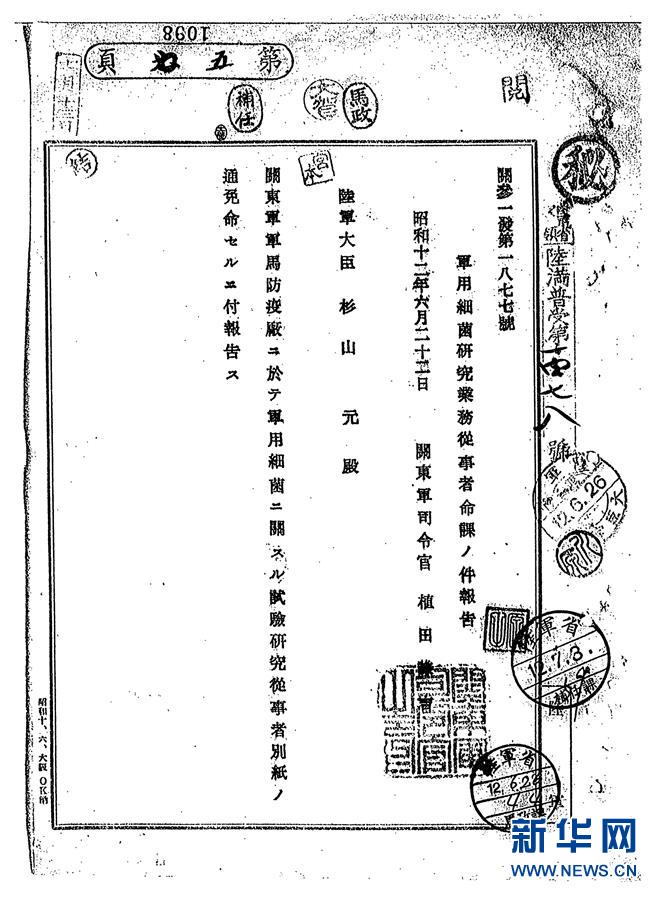
A scanned copy of the command document of the Japanese Kwantung Army Command "Guan Can Yi Fa No.1877" (data photo). Xinhua news agency
The cover of animal epidemic prevention, such as horses, was quickly torn down. In 1937, an order document named "Guan Shen Yi Fa No.1877" was officially issued. The commander of the Kwantung Army, Kenji Ueda, ordered Japanese Army Minister Hajime Sugiyama to submit a report on the "Order for Military Bacteriological Research Practitioners" and appointed Kazuo Takashima and others to engage in military bacteriological research. At this point, the 100th Army officially moved from the previously declared epidemic prevention research to the organized national military bacterial research. "This marks that the 100th Army has officially gone to the point of no return of national organized crime." Zhao Shijian said.
During the existence of the 100th Army, "talons" extended to many places. According to reports, the 100th Army is a systematic germ warfare force, which consists of three parts: the headquarters, the branch factory and the Legion Veterinary Force. The headquarters is composed of the General Affairs Department, the Ministry of Education and the first, second, third and fourth business departments, with branches mainly in Dalian, Mudanjiang and other places. The so-called "Legion Veterinary Unit" is a special germ unit established by combining the 100th unit with the frontline units, such as the 2631st unit of the 20th army and the 2630th unit of the 11th army of the Japanese army.
While the Japanese invaders were busy secretly studying bacteriological weapons and preparing to launch a bacteriological war, the struggle of anti-Japanese armed forces in Northeast China under the leadership of the Party never stopped. At the same time that the 100th Army was formally established, in Tonghua, Fusong and other northeastern places, the First Army and the Second Army of the Northeast Anti-Union Army dealt a powerful blow to the Japanese invaders. The anti-United team has been growing and growing in successive battles, and the heroic northeast people have also been involved in the torrent of fighting against the brutal rule of the Japanese invaders. This situation has also stimulated the almost crazy invaders, trying to destroy the resistance force with more lethal bacterial weapons.
Struggle tenaciously in suffering.
For a long time, Unit 731 of the Japanese invaders was notorious, and its extensive use of human bodies to commit crimes such as bacteria test was appalling. Research shows that the 100th unit, as the "devil brother" of the 731 unit, has more terrorist crimes than the 731 unit.
However, why has the truth of the 100th Army been little known?
Zhao Shijian said that the Japanese invaders were worried about the exposure of their crimes after the defeat. On the eve of the defeat, the Japanese Army Province ordered the headquarters of the Kwantung Army to destroy or take away all the information and equipment related to the 100th Army, and the factory building was seriously damaged. According to the investigation data in Changchun after the war, Wang Jun, a citizen who worked as a coachman in the 100th Army, said that he saw someone burning thousands of photos with gasoline in front of the army office at that time, which was obviously destroying evidence.
The brutal crimes of the 100th Army cannot be burned out. Zhao Lingshi, former party secretary and vice president of Jilin Provincial Museum, has been engaged in related research of the 100th Army since 1980s. Through many visits to witnesses in that year, experts such as Zhao Lingshi uncovered the numerous crimes that this unit has been trying to hide.
According to Zhao Lingshi, the 100th Army, following the orders of the Japanese Military Department, has devoted its headquarters and its detachments to intense research and development since its completion, in order to research and manufacture germ weapons for germ warfare on animals and plants as soon as possible. All the bacteria that might carry out germ warfare on animals and plants have been studied repeatedly, and finally they have determined that malleolus, anthrax, rinderpest, plague and mottle are the main bacterial weapons.
Zhao Lingshi said that the 100th Army used a large number of animals for experiments, but it was not used for real epidemic prevention, but for cultivating and manufacturing bacteria. At that time, the 100th Army kept a large number of animals in more than 20 buildings and more than 10,000 square meters, most of which were rats and horses. According to the post-war investigation, the 100th Army bred and acquired tens of thousands of experimental animals such as rats, rabbits and horses every year. Among them, a considerable number of animals such as horses used in experiments were plundered from the families of China people.
With the gradual deepening of research, experts discovered a more frightening aspect of the 100th Army: conducting human experiments in vivo. After Japan’s defeat, some people near the site of the 100th Army inadvertently discovered the truth. Zhao Lingshi said that in the spring of 1949, when some villagers went to dig horse bones for fertilizer near the site of the 100 th Army, they dug up human bones and dug more and more. The villagers also found a huge body burial site, and the tragic situation could not be described.
Various sources further prove that the 100th Army once regarded the living as the object of bacteria test. According to the records, Keitaro Ando, a member of the 100th Army and an army veterinary second lieutenant, confirmed that he had witnessed experiments on living people as guinea pigs. After the war, army veterinarians Ohuchi and Takeshi Nishimura of the 100th Army revealed to the Allied Command in Japan that Ruosong Yujiro, the chief of the 100th Army, had conducted a live human experiment. The existing "A Report" and "G Report" in the United States directly point out that the 100th Army had conducted experiments on the efficacy of anthrax and malleolus with human living bodies and conducted cruel vivisection.
According to the book "Trial Materials of Former Japanese Army Soldiers Accused of Preparing and Using Bacteriological Weapons", three friends and one man, an experimenter of Japanese Army Cao Chang (Staff Sergeant), confessed that he participated in the experiment of using living people to make bacterial infections or poison drugs in the 100th Army. Some people took the experimental poison mixed with food unconsciously, and everyone was asked to eat these toxic foods many times for three friends, one man and others to observe. Sanyou and a man confirmed that, in order to keep secret, the people who were used in the experiment were all killed by injecting toxic substances after the experiment was completed.
Carrying out germ warfare is an important means for the Japanese army to launch a war of aggression against China. According to experts such as Liu Long, the archives found now prove that the 100th Army once conducted field bacterial tests in Hailar and other places, and also participated in the delivery of solutions and bacterial bombs containing virulent infectious germs such as plague and cholera to the Soviet Union in the Battle of Nomenkan. At that time, the plague in some places in Northeast China was also proved to be related to the 100th Army.
In the northeast trampled by the invaders, innocent civilians and soldiers who fought against the Japanese invaders became victims of germ warfare. In such suffering and threats, the sons and daughters of China are still tenacious and unyielding to resist. Yang Jingyu, Cao Yafan, Wei Zhengmin, Zhou Baozhong, Zhao Shangzhi and other famous anti-Japanese soldiers and people with lofty ideals made the Japanese invaders restless with immortal struggles and great sacrifices, and finally led these beasts to their demise.
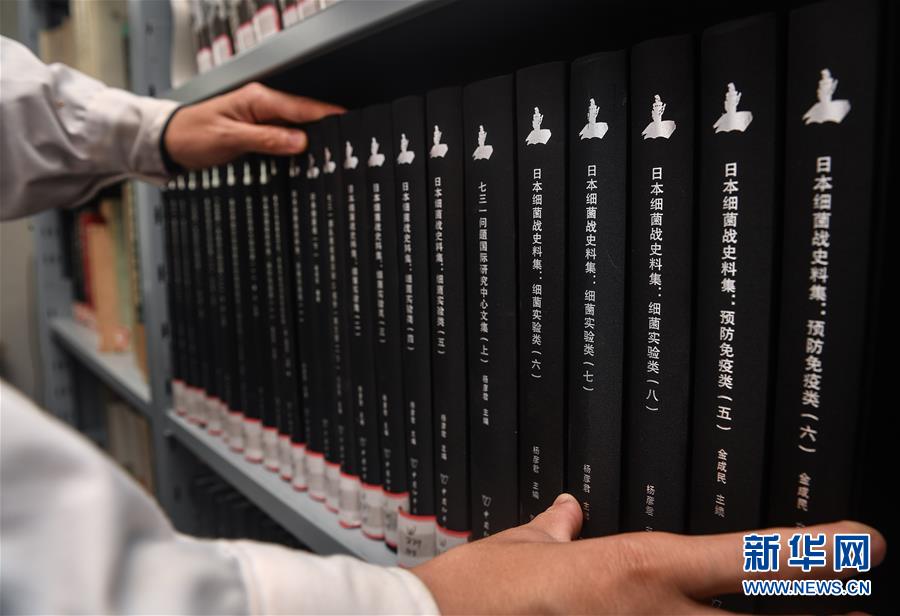
The cruel past will always be remembered
In 1925, representatives of 37 countries signed the Protocol for the Prohibition of the Use of Asphyxiating, Poisonous or Other Gases and Bacteriological Methods of Warfare (Geneva Protocol), and Japan was a signatory. However, the Japanese invaders trampled on their original promises in the war.
"Japan studied and used a large number of bacterial weapons in the war of aggression against China, which not only caused a large number of casualties among residents, but also left great psychological trauma to the victims and destroyed the natural environment." Liu Long said. According to reports, some bacterial weapons released by the 100th Army at that time not only infected and killed a large number of people and animals, but also polluted rivers, grasslands and forests. On the eve of the defeat, the Japanese invaders who fled in haste did not forget to release some animals infected with germs in the experimental field to harm innocent people.
Regrettably, the brutal invaders did not get the punishment they deserved. "In 1945, the 100 th Army was a force of about 940 people, but very few people actually accepted the trial afterwards." Peng Chao, a researcher at the Research Center of the Puppet Manchuria Palace Museum, said. Peng Chao’s research found that most people of the 100th Army returned to Japan after the war, and most of them chose to hide this history except for some people who voluntarily exposed the crimes of the 100th Army in conducting human experiments. Some people even became famous figures in Japanese veterinary science after returning to China. The officers of the 100th Army, Kazuo Takashima, Caisan Kazuhe and Ruosong Yujiro, were not tried after returning to China, but lived a stable life.
Fortunately, the tenacious anti-Japanese armed forces and the broad masses were not knocked down by bacterial weapons. "This spirit of struggle and national spirit is an indispensable force in beat the devil." Liu Long said that in the face of the horrible germ warfare, the tenacious soldiers and civilians in China did not give in, but won the final victory with a long and arduous struggle, great dedication and selfless and fearless sacrifice.
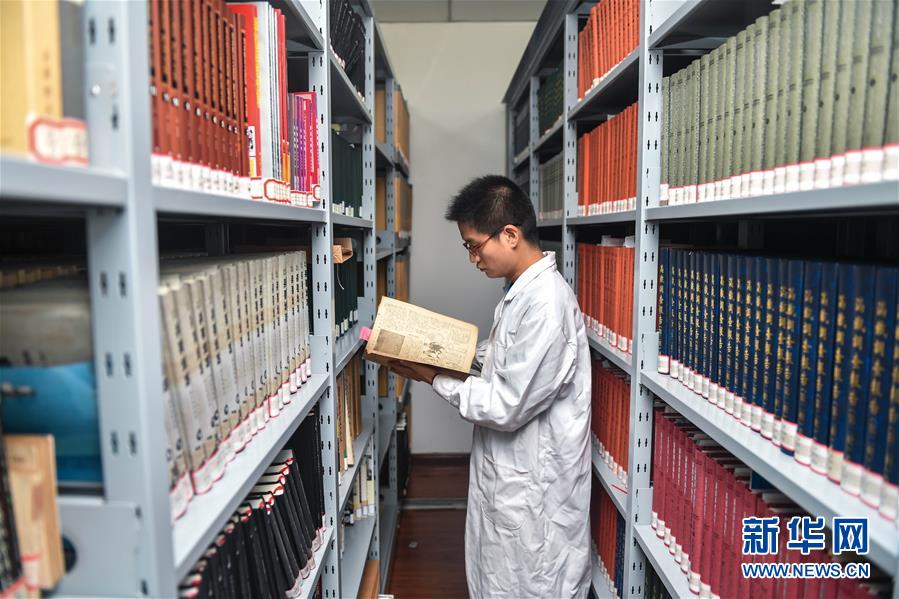
Zhao Shijian, a researcher at the Puppet Manchuria Palace Museum, looked up relevant historical materials in the database (photo taken on September 14). Xinhua News Agency reporter Xu Changshe
The historical truth has not been buried forever. In the 1950s, Changchun organized an investigation into the crimes of the 100th Army and took photos and other materials. In 1950, Changchun New Newspaper published many photos of criminal evidence of the 100th Army. Some people who once worked as laborers in the 100th Army also restored the truth of this "demon army" with their own experiences.
Now, Changchun has built a ruins garden on the basis of the ruins of the 100th Army, for people to remember that humiliating history. In the Puppet Manchuria Palace Museum, a special research group composed of several researchers has achieved a series of research results. According to the plan, some documents and physical exhibits of that year will be exhibited this winter.
"We are contacting experts and scholars at home and abroad to carry out relevant research, looking for more historical archives and objects to reveal that little-known history and expose this crime against humanity." Zhao Jimin, vice president of the Puppet Manchuria Palace Museum, said that in the future, the museum will let more people know the far-reaching impact of the Japanese invaders’ germ warfare on the people of the world through digital exhibitions and other means.
"Today, we study the numerous crimes of the 100th Army in order to let people remember the horrible consequences of the germ warfare in those days and the historical stain left by the Japanese aggressors that can never be erased. Taking history as a mirror, we hope that more people will know this history, love peace more, better inherit our national spirit and struggle spirit, and prevent historical tragedies from repeating themselves. " Zhao ling told the truth.